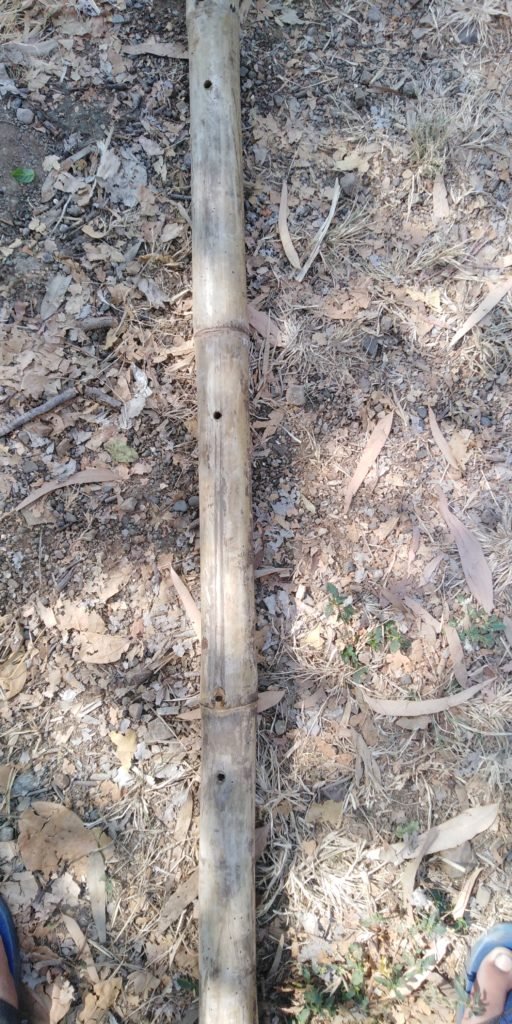Objective:
- To treat bamboo and make bamboo insect resistant, fungi resistant.
- To make bamboo suitable according to weather conditions.
- To test bamboo and concrete relationship.
Bamboo being the carbon negative grass(plant) plays a very important role in carbon fixation. Bamboos include some of the fastest-growing plants in the world,[ due to a unique rhizome-dependent system. Certain species of bamboo can grow 910 mm (36 in) within a 24-hour period, at a rate of almost 40 mm (1.6 in) an hour (a growth around 1 mm every 90 seconds, or 1 inch every 40 minutes). Bamboos are of notable economic and cultural significance in South Asia, Southeast Asia and East Asia, Bamboo has various purposes itself which can be used in many sectors like building furniture, ornaments, cloth, paper, construction building etc. Bamboo is a forest crop so it can be grown very easily and anywhere. There are 1600 species of bamboo out which only some of them are discovered. Various species of bamboo are used for various purposes like dendrocalamus strictus and dendrocalamus stockshii is used for construction purposes. Bamboo takes 3 yrs to grow to its full maturity and it is the fastest growing plant and should be harvested before dusk and after dawn.
1) Lifecycle of the culm: As each individual culm goes through a 5- to 7-year life cycle, culms are ideally allowed to reach this level of maturity prior to full capacity harvesting. The clearing out or thinning of culms, particularly older decaying culms, helps to ensure adequate light and resources for new growth. Well-maintained clumps may have a productivity three to four times that of an unharvested wild clump. Consistent with the life cycle described above, bamboo is harvested from two to three years through to five to seven years, depending on the species.
2) Annual cycle: As all growth of new bamboo occurs during the wet season, disturbing the clump during this phase will potentially damage the upcoming crop. Also during this high-rainfall period, sap levels are at their highest, and then diminish towards the dry season. Picking immediately prior to the wet/growth season may also damage new shoots. Hence, harvesting is best a few months prior to the start of the wet season.
3) Daily cycle: During the height of the day, photosynthesis at its peak, producing the highest levels of sugar in sap, making this the least ideal time of day to harvest. Many traditional practitioners believe the best time to harvest is at dawn or dusk on a waning moon.
Bamboo Treatment:
Bamboo treatment is carried in various ways:
Bamboo when early in age and harvested contains starch and lignin which attracts insects and affecta the bamboo. So bamboo should be treated with chemicals for further uses.
There are some ways in which bamboo can be treated:
- Non fixing type preservatives.
- Borax and Boric Acid
- Fixing type preservatives.
- Copper Chrome Arsenic
- Copper Chrome Boron
- Zinc Chrome
- Copper Chrome Acetic
Non Fixing Type Preservative;
Non-fixing bamboo preservatives mainly consist of boron salts, which are effective against borers, termites and fungi (except soft rot fungi). These boron salts are dissolved in water. After treatment, the water evaporates leaving the salts inside the bamboo.
Fixing Type Preservative;
Copper Chrome Arsenic (CCA)
CCA is a heavy duty broad spectrum chemical bamboo preservative patented as AsCu. It has been found to provide protection for 50 years or more. Outdoor use is recommended only due to the arsenic component, which can also causes a green coloration on the bamboo.
Formula:
- arsenic pentoxide / copper sulphate / sodium dichromate
- ratio 1:3:4
Recommended concentration:
- 6% outdoor use (structures exposed to weather but not in contact with ground)
- 10% outdoor use (structures exposed to weather and in ground contact)
Due to availability of materials and weather conditions non fixing type preservative is used like borax and boric acid solution. This process is used for indoor purposes for like creating furniture, ornaments.
Borax and Boric Acid
Bamboo is treated with chemicals like borax and boric acid. Boric acid and borax are added in 100 litres of water in ratio of 1:1.5.
For example 1 kg of Boric acid and 1.5 kg of borax is need for 100 litres of water. When this solution is prepared bamboo are immersed in it and kept for 15 days.
Bamboos are given hole on the top and bottom part of internode opposite to each other i.e 2 hole in 1 internode, this is to let the solution go into the internode of bamboo after which absorption of solution starts.
After 15 days bamboos are taken out and kept horizontally for drying. And only horizontally under a shade not in direct sunlight as it gives cracks to bamboo.
Another method is pumping this solution through bamboo with pneumatic pumps which exales starch from bambooo.

Bamboo immersed for 15 days in a temporary bed with the above solution composition

Bamboo treatment bed made out of bricks.

Bamboo treatment bed covered with plastic so that water is poured from above and bamboo is put in the bed filled with solution with drilled bamboos.

This is borax which is added as 1.5 in 1:1.5 ratio

This is boric acid which is added as 1 in 1:1.5 ratio.

Self welded stand.
Upper part of the stand is to hold the bamboo in horizontal direction.
Lower part of the stand is to hold the treated bamboo. There are 3 rows to hold the bamboos. It can hold 18 bamboos in one moment.




This holes are drilled on the bamboo so that when bamboo is immersed on the solution of bed, solution goes into the bamboo through holes and is treated for 15 days.





